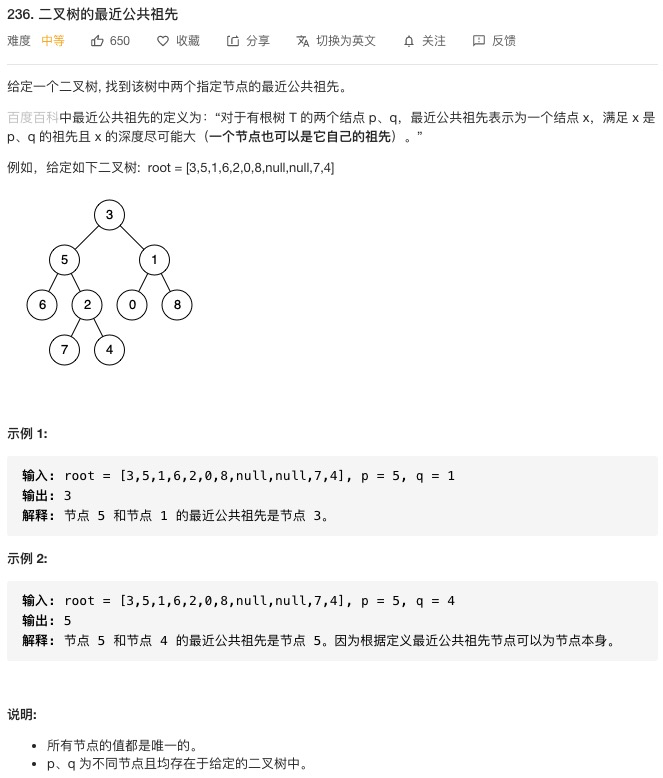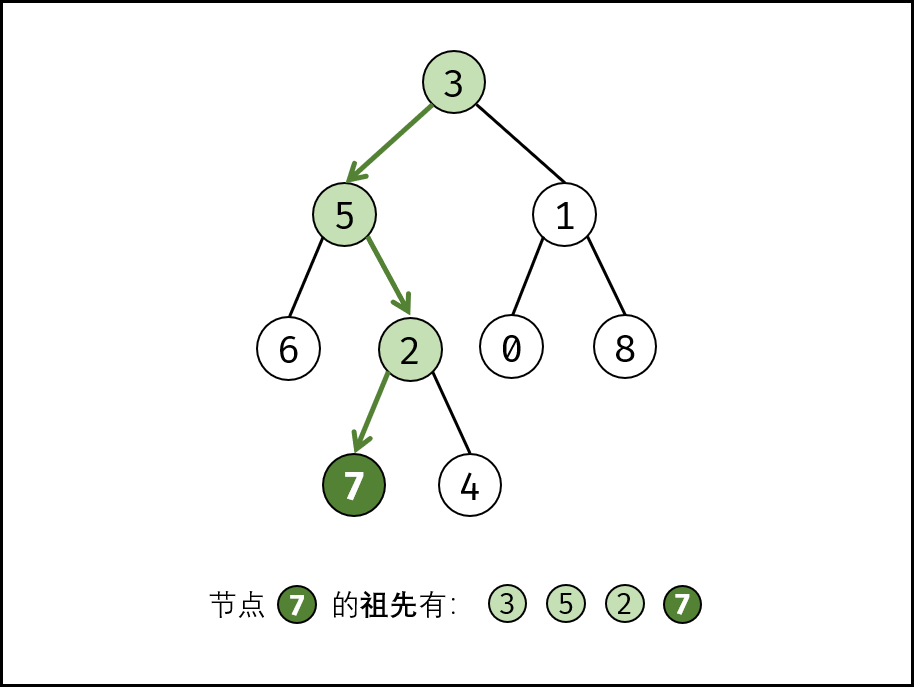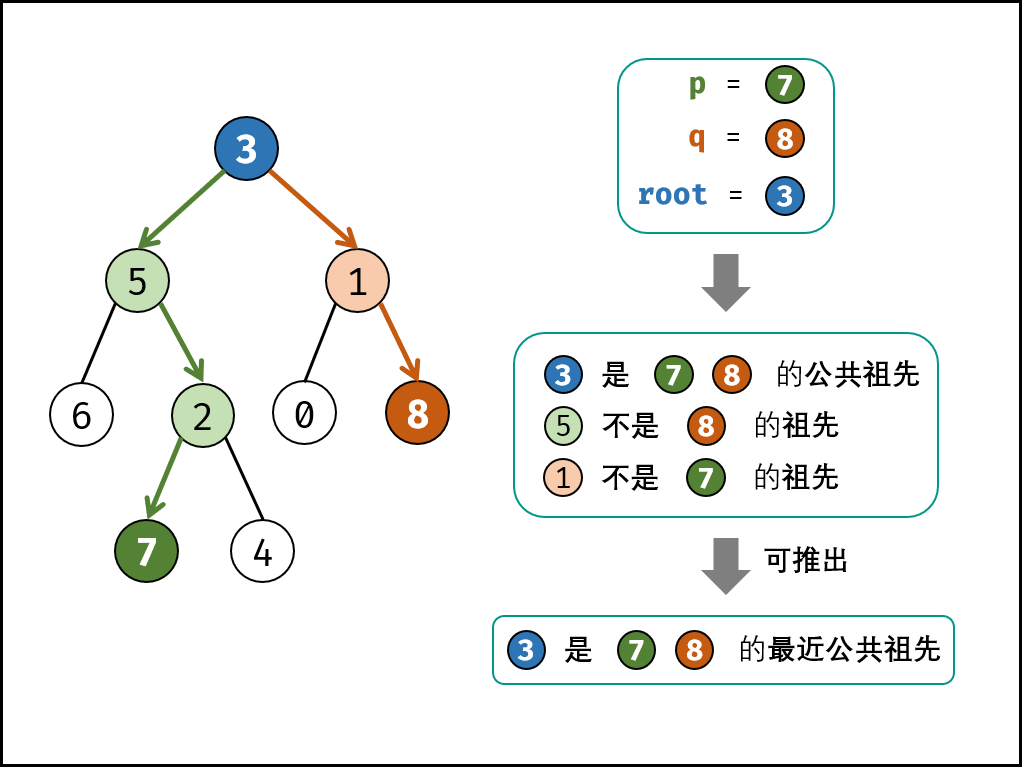236. 二叉树的最近公共祖先
解题思路
祖先的定义: 若节点 

,则称


最近公共祖先的定义: 设节点 





根据以上定义,若 

1、 



2、 ,且


3、 ,且


考虑通过递归对二叉树进行后序遍历,当遇到节点 p 或 q 时返回。从底至顶回溯,当节点 p、q 在节点 root 的异侧时,节点 root 即为最近公共祖先,则向上返回 root。
递归解析
1、 终止条件
- 当越过叶节点,则直接返回
;
- 当
等于
,则直接返回
;
1、 递归工作
- 开启递归左子节点,返回值记为
;
- 开启递归右子节点,返回值记为
;
1、 返回值:根据 

- 当
和
同时为空:说明
的左/右子树都不包含
,返回
;
- 当
和
同时不为空:说明
分列在
的 异侧(分别在左/右子树),因此
为最近公共祖先,返回
。
- 当
为空,
不为空:
都不在
的左子树中,直接返回
。具体可以分为两种情况:
- (1)
其中一个在
的 右子树中,此时
指向 p (假设为
)
- (2)
两节点都在
的 右子树中,此时的
指向 最近公共祖先节点
- (1)
1、 当 

观察发现,情况1 可合并至 3 和 4 内。
参考代码
/**
* Definition for a binary tree node.
* public class TreeNode {
* int val;
* TreeNode left;
* TreeNode right; * TreeNode(int x) { val = x; } * } */ class Solution { public TreeNode lowestCommonAncestor(TreeNode root, TreeNode p, TreeNode q) { if (root == null || root == p || root == q) return root; TreeNode left = lowestCommonAncestor(root.left, p, q); TreeNode right = lowestCommonAncestor(root.right, p, q); if(left == null) return right; if(right == null) return left; return root; } public TreeNode lowestCommonAncestor2(TreeNode root, TreeNode p, TreeNode q) { if(root == null || root == p || root == q) return root; TreeNode left = lowestCommonAncestor(root.left, p, q); TreeNode right = lowestCommonAncestor(root.right, p, q); if(left == null && right == null) return null; //1. if(left == null) return right; // 3. if(right == null) return left; // 4. return root; //2. if(left != null && right != null) } }
部分图片来源于网络,版权归原作者,侵删。



 ;
; 等于
等于  ,则直接返回
,则直接返回  ;
; ;
; ;
; 和
和  同时为空:说明
同时为空:说明  的左/右子树都不包含
的左/右子树都不包含  ,返回
,返回  ;
; 和
和  同时不为空:说明
同时不为空:说明  分列在
分列在  的 异侧(分别在左/右子树),因此
的 异侧(分别在左/右子树),因此  为最近公共祖先,返回
为最近公共祖先,返回  。
。 为空,
为空,  不为空:
不为空:  都不在
都不在  的左子树中,直接返回
的左子树中,直接返回  。具体可以分为两种情况:
。具体可以分为两种情况:
 其中一个在
其中一个在  的 右子树中,此时
的 右子树中,此时  指向 p (假设为
指向 p (假设为  )
) 两节点都在
两节点都在  的 右子树中,此时的
的 右子树中,此时的  指向 最近公共祖先节点
指向 最近公共祖先节点